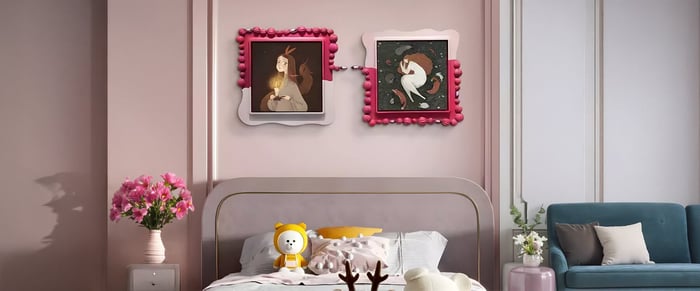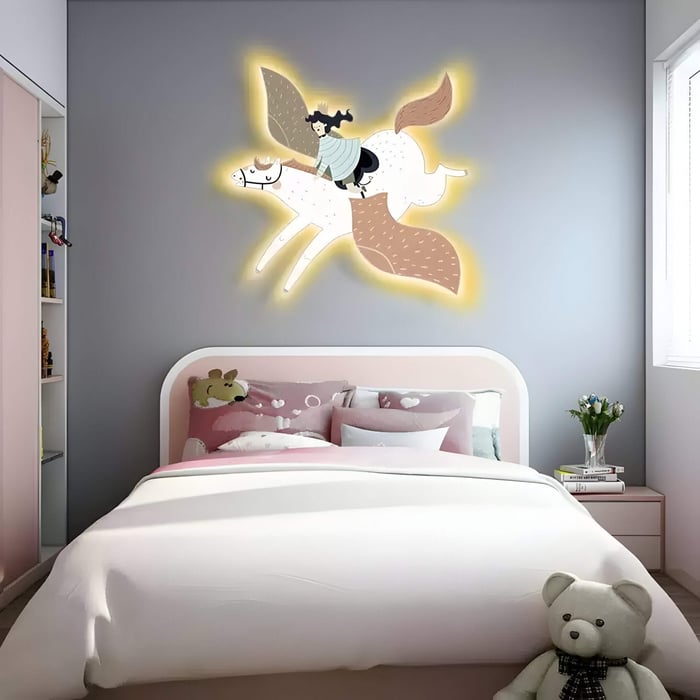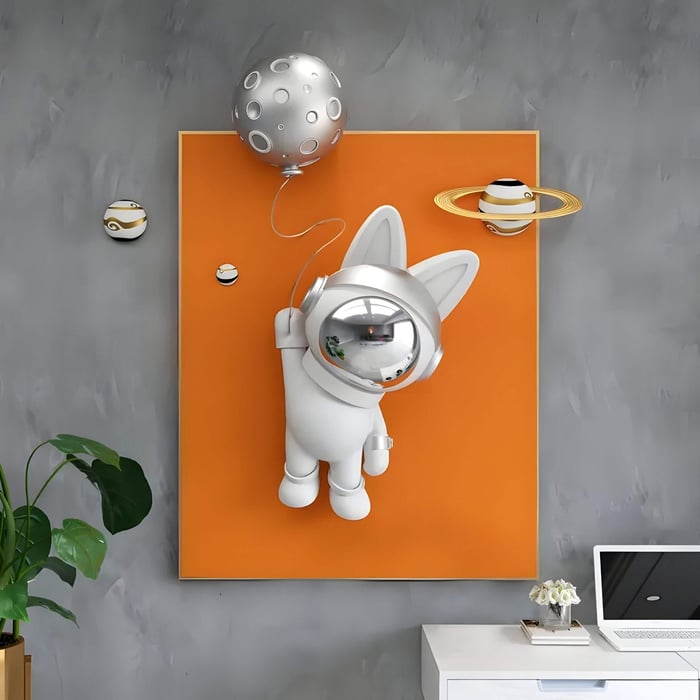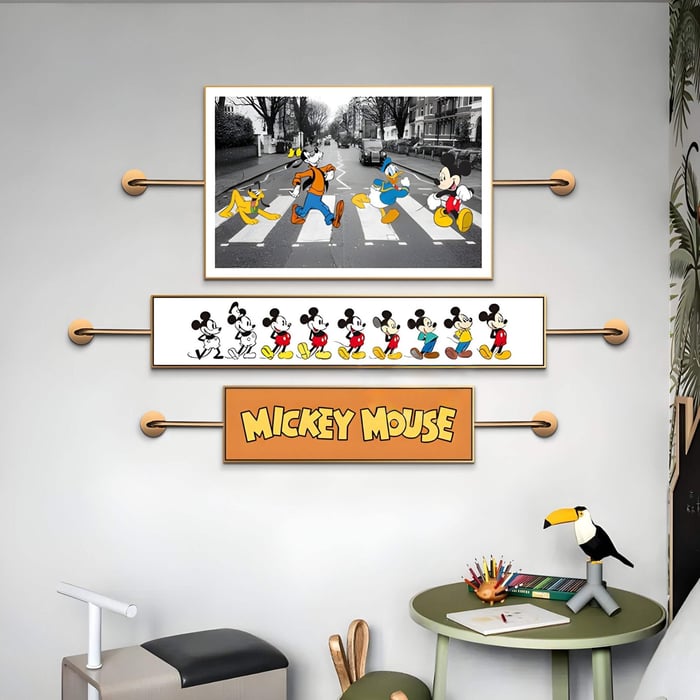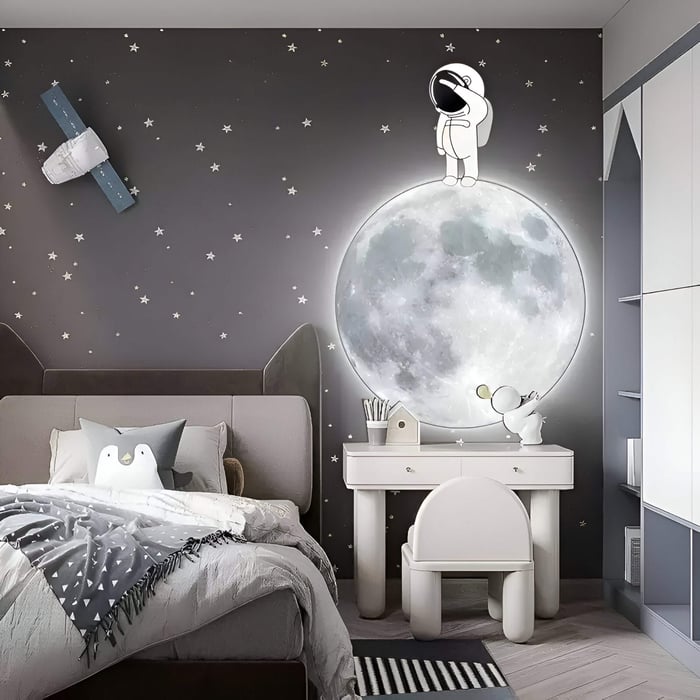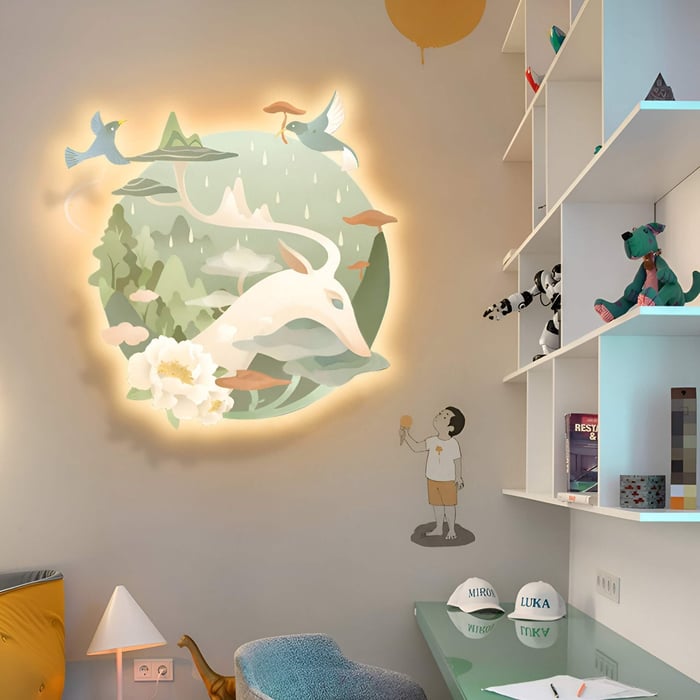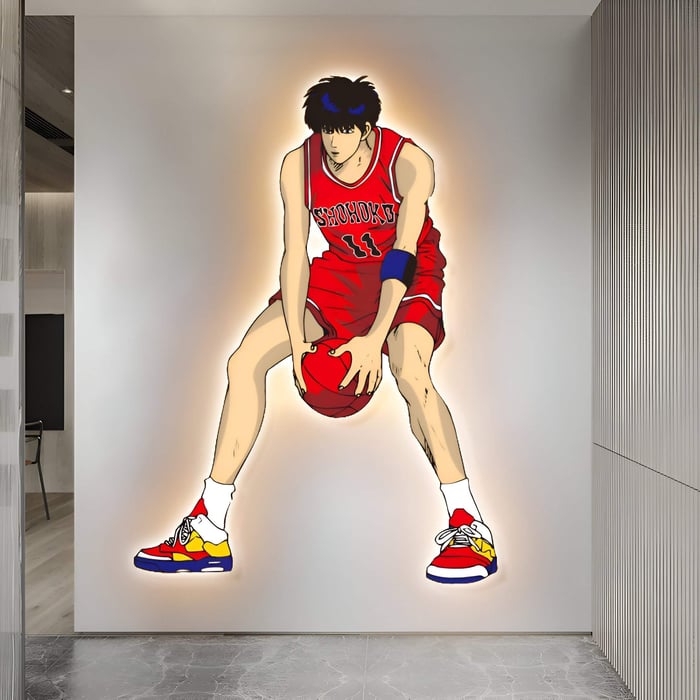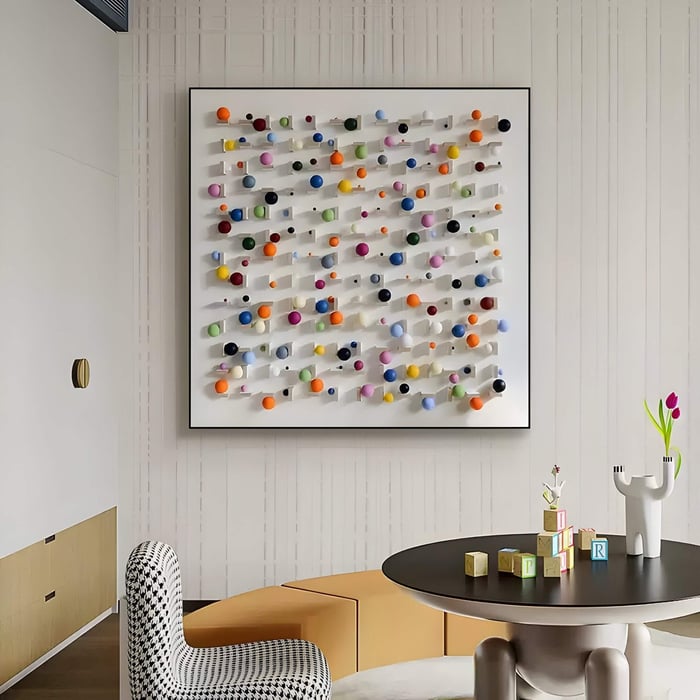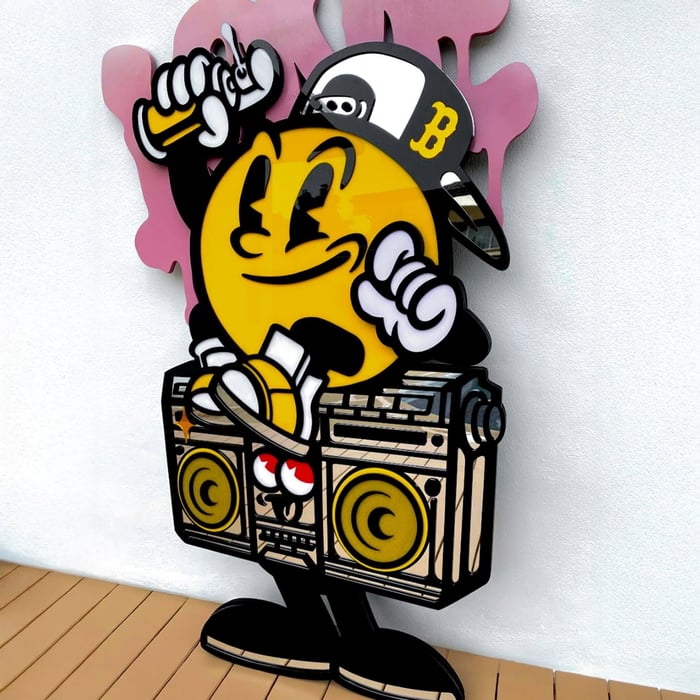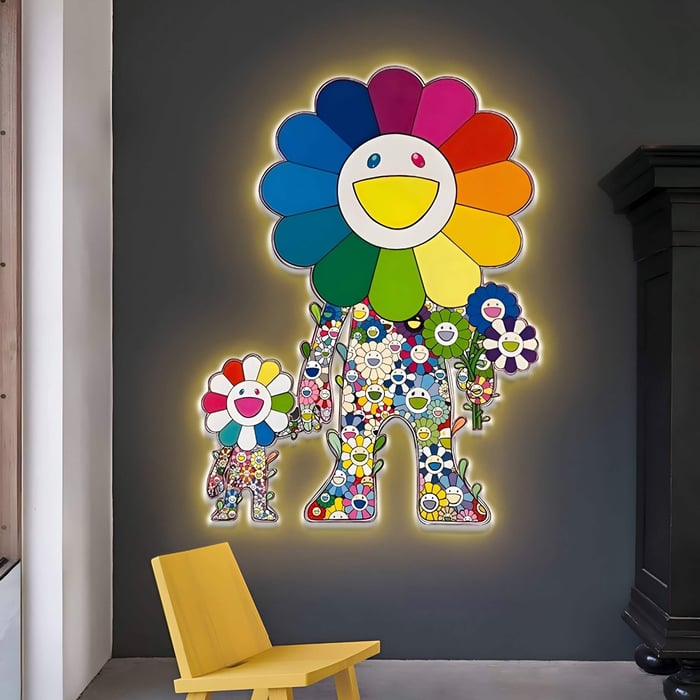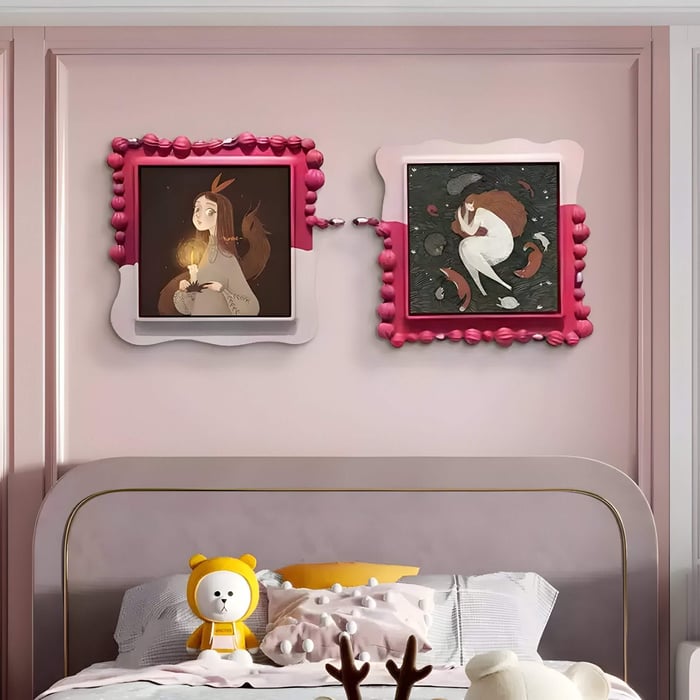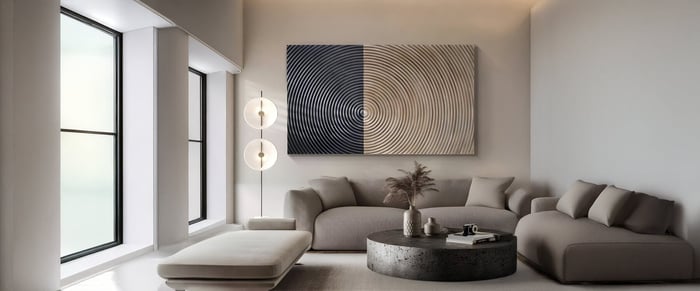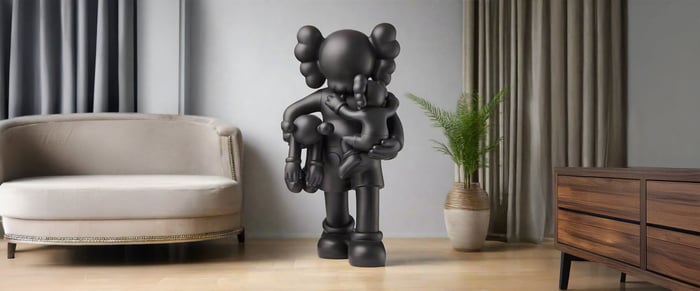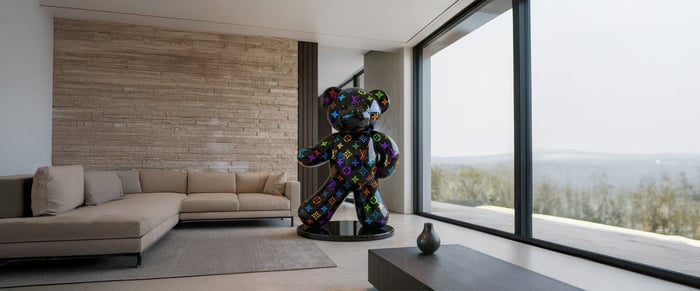Decorating your child’s bedroom or nursery with Kids Room Art does more than simply fill blank walls. The right wall art and paintings can spark creativity, support learning and grow alongside your youngster’s evolving tastes. But with so many options - nursery art, framed prints, wall decals and more, it’s easy to feel overwhelmed.
Below, we tackle the most common questions parents ask about Kids Room Art, covering style, safety, themes, sizing, maintenance, DIY ideas and how to involve your child in the process. Use this guide to make informed choices that delight today and adapt tomorrow.
Why Kids Room Art Matters
Emotional Development & Comfort
Wall art helps create a nurturing haven. Soft pastel nursery prints, whimsical children’s wall décor and themed murals, whether featuring woodland creatures or fairy-tale castles, offer visual comfort and familiarity. A cosy, personalised space reduces anxiety and promotes restful sleep.
Cognitive & Educational Benefits
Decorative art can double as learning tools. Educational wall art like alphabet charts, world maps or simple number prints engage toddlers and pre-schoolers daily, reinforcing early literacy and geography. Interactive wall art, such as touchable textures or peel-and-stick decals, encourages hands-on exploration, boosting fine motor skills.
Aesthetic & Growth
Well-chosen artwork transforms plain walls into dynamic galleries. A coordinated kids’ gallery wall of framed prints adds sophistication and can adapt as your child ages, from playful cartoon characters to more abstract or motivational art pieces. By picking timeless themes and neutral bases, you ensure décor grows with them, reducing the need for constant redecoration.
Style & Design FAQs
1. What Styles Suit Different Age Groups?
Infants & Toddlers (0–3 years):
Soft-toned pastel nursery prints, high-contrast wall decals or simple children’s paintings (e.g. animal silhouettes). These calm palettes aid visual development without overstimulation.Pre-schoolers (3–5 years):
Whimsical watercolour paintings, themed murals (unicorns, dinosaurs), or interactive wall art they can touch. Look for wall decals that reposition easily, little hands love to move stickers but may damage paint.Early School Age (6–9 years):
Bold kids’ paintings, educational wall art like maps or science charts, and DIY kids room art projects. Framed prints of favourite book characters or sports motifs reflect emerging interests.Tweens (10–12 years):
Abstract art, inspirational quotes, pop-culture references or neon art signs. These styles support budding identities. Let them select one or two pieces to express themselves.
2. How Do I Choose a Cohesive Colour Palette?
Calming Zones: Soft blues, greens and neutrals in bedrooms promote rest.
Creative Corners: Bright primaries or high-contrast murals in play areas energise.
Balance: Pair neutral backdrops (white, pale grey) with accent prints, perhaps a royal-blue canvas or sunbeam-yellow decal, to prevent visual overload.
3. Can Wall Art Grow with My Child?
Yes. Opt for timeless themes (animals, nature), versatile formats (gallery walls of removable framed prints) and neutral framing. Swap one or two accent pieces, like a bold custom name poster, as their tastes shift, rather than overhauling the entire room.
Safety & Material FAQs
1. Which Materials Are Safest?
Inks & Paints: Choose VOC-free inks and water-based paints to avoid noxious fumes.
Glazing: Prefer acrylic panels or polycarbonate over glass, shatterproof for safety.
Frames: Lightweight plastic or MDF reduces risk if knocked free.
2. How Do I Hang Art Securely?
Damage-Free Strips: Heavy-duty picture-hanging strips (rated for children’s rooms) avoid wall holes and hold reliably.
Anchors & Hangers: Use wall anchors for heavier framed prints or wood art; secure hangers at two points to prevent tipping.
Placement: Keep large or heavy pieces at least 1.5 metres off the floor and away from cribs or beds.
3. What Prevents Choking or Injury?
Avoid Loose Embellishments: Steer clear of beads, buttons or other small detachable parts.
Rounded Edges: Look for wall decals and frames with smooth corners.
Secure Backing: Ensure canvas or prints have sealed, sturdy backing to resist peeling.
Popular Themes & Their Benefits
Animals & Nature
Benefits: Encourages empathy and curiosity about wildlife.
Examples: Watercolour safari murals, framed prints of forest scenes.
Educational Charts & Maps
Benefits: Blends décor with learning - alphabet, world maps, solar system diagrams.
Examples: Vintage-style world map poster, magnetic letter boards.
Fantasy & Fairy-tale
Benefits: Fuels imaginative play and storytelling.
Examples: Unicorn canvases, castle wall decals.
Space & Science
Benefits: Inspires STEM interests.
Examples: Rocketship murals, constellation glow-in-the-dark stickers.
Abstract & Modern Art
Benefits: Introduces art history concepts and fine art appreciation.
Examples: Colour-block prints, minimalist line drawings.
Sizing & Layout FAQs
1. What Size Fits Over Beds, Desks or Cots?
Single Statement Piece: A large canvas art or mural (60 × 80 cm or larger) works above beds or reading nooks.
Cluster Gallery Wall: Mix smaller frames (30 × 40 cm, 40 × 40 cm) arranged symmetrically or in a playful grid.
2. How to Plan a Gallery Wall in Limited Space?
Maintain 5–10 cm between frames; start with the central piece at eye level for a seated child (around 100–120 cm from floor).
Use uniform frames for cohesion or mix textures (wood, acrylic, resin) for visual interest.
3. Can Decals or Murals Replace Framed Art?
Pros: Decals are removable and repositionable; ideal for renters.
Cons: May peel over time; lack the texture and depth of canvas or framed prints.
Maintenance, Durability & Care
Dusting: Wipe frames and surfaces weekly with a dry microfibre cloth.
Cleaning: Use a damp cloth with mild soap on laminated or acrylic prints; avoid soaking.
UV Protection: Place art away from direct sunlight or use UV-filter spray to prevent fading, especially important for pastel nursery prints.
Rotation: Refresh art every 6-12 months for toddlers, or as interests evolve. Durable wood and acrylic art withstand frequent changes better than paper-only prints.
DIY & Customization FAQs
1. How to Create Custom Name Posters or Murals?
Online Tools: Sites like Canva offer easy-to-personalise templates, download and print at home or a local print shop.
Hand-Painted Murals: Use stencils or projector tracing for precise designs.
Budget Hack: Download printable nursery art files (A4-A3), print on thick paper and frame in thrifted frames.
2. Benefits of Involving Kids in DIY Art
Ownership & Pride: Children are more likely to cherish art they help create.
Skill Development: Fine motor practice, colour theory basics and planning skills.
Involving Your Child in the Process
Turn wall art selection into quality time:
Mood Boards: Create a scrapbook or Pinterest board of themes and colours to discuss together.
Art Fairs & Galleries: Visit local craft markets or exhibitions, many children’s museums host family-friendly art events.
Rotating Exhibits: Let your child curate one “feature wall” that changes quarterly, building decision-making and aesthetic confidence.
Conclusion: Start Your Kids Room Art Journey
With these FAQs at your fingertips, you’re ready to transform bare walls into personalised wonderlands. From choosing age-appropriate children’s wall décor and ensuring safety with security wall hangers, to exploring themes that spark learning and creativity, thoughtful Kids Room Art fosters growth and joy.
Ready for the makeover? Explore our curated collections of framed prints, wall decals and educational wall art, and give your child a space that inspires every day.














































































